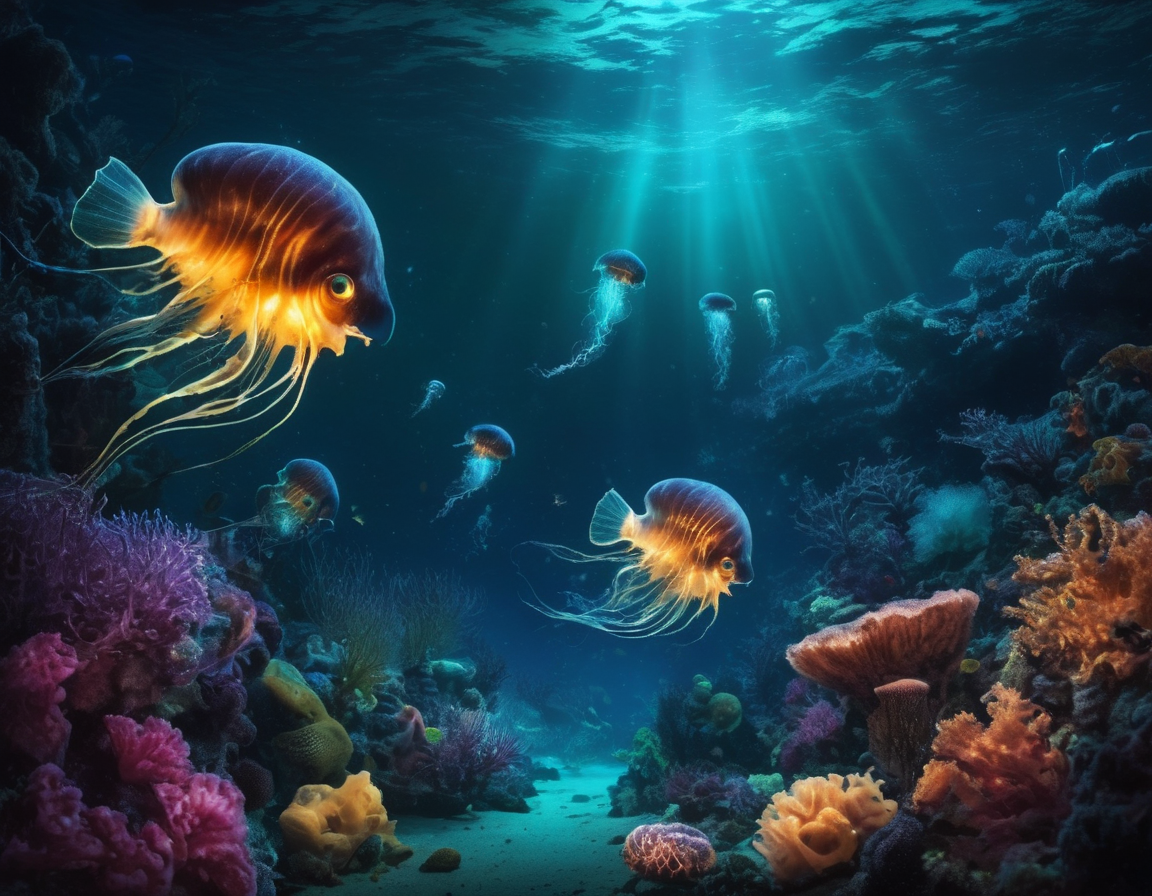The Fascinating World of Bioluminescent Organisms: A Glimpse into Nature’s Living Lights
Unveiling the Mysteries of Bioluminescence
Bioluminescence, the ability of living organisms to emit light, has captivated the imagination of humans for centuries. This phenomenon is not just a stunning natural spectacle but also a subject of scientific intrigue. In this in-depth exploration, we will dive into the world of bioluminescent organisms, examining how and why they glow, their importance in ecosystems, and the potential applications of their glow in various fields. Prepare to be enlightened by the natural phenomena that brighten the dark corners of our planet.
Understanding Bioluminescence: A Natural Phenomenon
Bioluminescence is a chemical process that allows living organisms to produce and emit light. These organisms can be found in all sorts of habitats, from the deepest parts of the oceans to your backyard garden. The light is created through a chemical reaction involving a light-emitting molecule called luciferin and an enzyme called luciferase. When oxygen is introduced to these two components, it results in a glow that can come in various colours, depending on the organism. 
The role of Bioluminescence in Nature
While bioluminescence appears mystical to us, it serves practical purposes in the wild. Deep-sea creatures like the anglerfish use their luminous lure to attract prey in the dark, abyssal waters. Fireflies flash their lights in complex patterns to find mates, and certain types of fungi glow in the night, possibly to attract insects that help disperse their spores. This unique trait has evolved independently multiple times across different species, demonstrating its important role in survival.
Bioluminescence Across the Tree of Life
Bioluminescence has evolved in diverse groups of organisms, including fish, cephalopods, insects, and fungi. Among the most well-known bioluminescent creatures are jellyfish and fireflies. However, bioluminescent species are not distributed evenly across the tree of life. The majority of light-emitting species reside in the ocean, particularly in the mid to deep-water regions, where sunlight does not reach, and bioluminescence provides the only source of light.
Human Interactions and Scientific Applications
Bioluminescence has inspired myths and folklore throughout human history. Today, it finds applications in scientific research. The discovery and utilization of green fluorescent protein (GFP) from the jellyfish Aequorea victoria has been pivotal in molecular and cellular biology, allowing scientists to visualize the inner workings of cells and organisms. Bioluminescence is also being investigated for use in medical diagnostics, environmental monitoring, and creating sustainable natural lighting.
A Glimpse into the Future of Bioluminescence
The study of bioluminescent organisms continues to fuel innovation and curiosity. Future research may lead to more breakthroughs in medical and environmental technologies. As we continue to explore the potential of these living lights, we are reminded of the endless mysteries and possibilities that nature holds. 
Bioluminescence holds the key to understanding many of nature’s secrets. By studying these glowing organisms, not only do we unravel the workings of life on Earth, but we also open up a realm of biotechnological applications that could redefine our future. Let us continue to cherish and learn from the captivating glow of nature’s own living lights.






